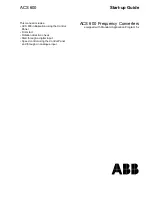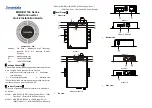
6.6
Using the equipotential bonding strip and shield bus
Each cabinet is equipped with an equipotential bonding or grounding bar to make it simpler to
connect equipotential bonding conductors.
Connect all internal and external components to this equipotential bonding busbar. is Attach the
shields of incoming and outgoing cables directly to the shield bus. It is important here to
establish the greatest possible area of contact and a good conductive connection.
bP
&DELQHW
ILUPO\FRQQHFWHGWRWKH
YHUWLFDOFDELQHW
7RRWKHUV\VWHP
FRPSRQHQWV
(TXLSRWHQWLDOEXVEDU
6KLHOGLQJEXV
6HUUDWHGEXVEDU
&RQWUROV\VWHP
3RZHU
FRPSRQHQWV
7HUPLQDOEORFN
Figure 6-5
Equipotential bonding strip
6.7
Connecting the protective grounding
Connect the protective grounding to the cabinets and components in the system via the PE
conductor. Use the ground clamps for this, or the special terminal provided for the auxiliary
voltage.
Route the protective conductors in accordance with IEC 60204‑1 (DIN EN 60204‑1/VDE 0113
Part 1) Safety of machinery – Electrical equipment of machines – Part 1: General requirements.
Where possible, also connect the cabinet conductively over a large area with the building
ground.
Note
The equipotential bonding conductor does not have the function of a protective conductor. The
equipotential-bonding conductor is required for safe operation and as an interference
suppression measure.
Electrical connection
6.7 Connecting the protective grounding
3rd Party LCI Control Upgrade
Operating Instructions, 02/2022, A5E31872818
89















































